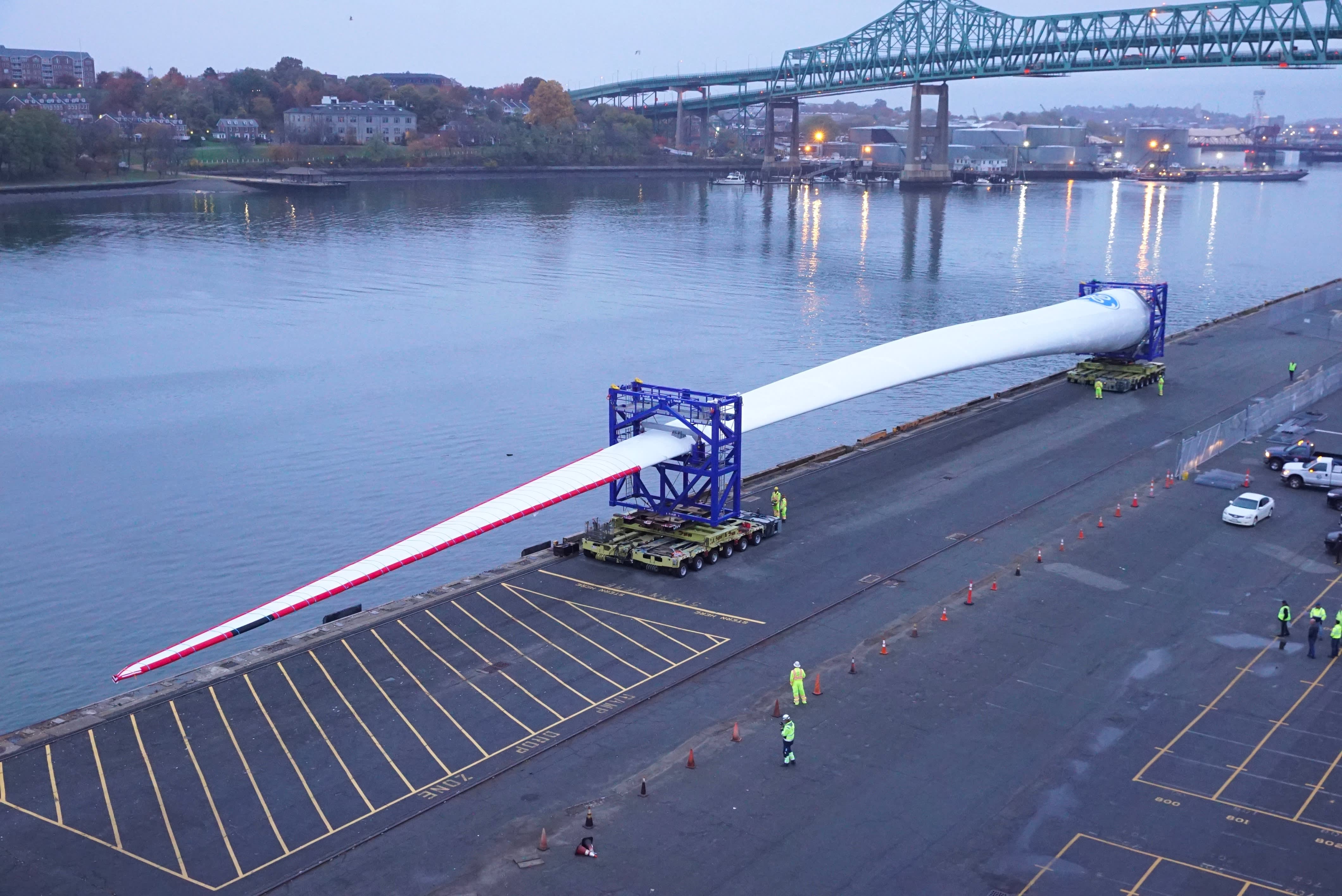| « ADD/ADHD, AADHD, And The Useful Idiots | The "RESTRICT Act" S.686 » |
Environmentalism and The Joy of Shortsightedness
Many people have seen the news about wind turbines, how much power they can produce, and how the major issue is storage of power. But there's one aspect that's often overlooked -- what happens to the blades when they reach end of life, or are damaged?
I took a look at this and found that it's a major issue. Of course, it's an issue avoided by those pushing for more wind turbines.
Plans for dealing with deteriorated turbine blades are insufficient and lead to absurd amounts of material and land waste.
There are around 58,000 wind turbines in the U.S. according to the U.S. Wind Turbine Database, with an estimated 3,000 more planned to be erected by the end of this year. While this looks like good news, it brings with it a problem that is becoming more intimidating as time progresses.
Turbine blades need to be replaced as frequently as every 10 years due to natural deterioration, damage or upgrades. As more turbines go up, it becomes a major issue to deal with so much waste.
There are currently no plans to dispose of retired blades in an environmentally friendly manner. The current process for getting rid of these blades is to pile them up and cover them with dirt like a mass grave.
Tossing these massive 120-foot pieces of fiberglass is incredibly wasteful and antithetical to the green aspect of this energy source. There are three alternatives to unsustainable landfills: recycling, repurposing and repairing.
There are ways to recycle these blades, but it is not easy. These long, white pieces of fiberglass are built to withstand the immense forces of hurricanes and tornadoes. They are designed specifically to be difficult to break.
Companies have been able to burn the blades in kilns to generate electricity, but this results in noxious pollutants and does not produce much power. They have also tried to grind blades into dust to extract chemicals, but with little success.
Two promising recycling methods have been pressing the blades into boards to use for construction and shredding the fiberglass into ingredients for cement. Neither of these have been fully implemented at an industrial scale.
While recycling increases the versatility of the waste material, the process increases the carbon footprint, which is not ideal for what is intended to be an environmentally friendly product.
There are other companies that would like to cut the blades up and use them for park benches, or other types of building projects, but again this is not ideal.
Then just the other day I see this article from MIT Technology Review. It appears that someone has found a way -- sort of.
To break down the epoxy materials, researchers submerged them in a mixture of solvents and added a catalyst, which helped accelerate the chemical reaction. They heated everything up to 160 °C (320 °F) for between 16 hours and several days, until the target material was fully broken down.
After some initial tests, the researchers used their method to chew up a one-inch-square chunk of a wind turbine blade. After six days, the result was nearly spotless glass fibers (and a supporting metal sheet that runs through most turbine blades) and vials of ingredients that could be used again in new materials.
This is the first time that researchers have been able to break down a reinforced epoxy material to recover both the plastic’s building blocks and the glass fibers inside without damaging either, Skrydstrup says.
While this process was able to chew up materials in the lab, it could be difficult to pull off at large enough scale to make a dent in the millions of tons of wind turbines coming out of service in the next few decades. “I think what’s important is that it shows a proof of concept that may inspire others to start looking in this direction,” Skrydstrup says.
This seems promising, right?
The next stage, Rorrer says, would be figuring out how this could work on an industrial scale, or determining what would need to be adjusted so the process could be quick and efficient enough to be economical.
One of the possible roadblocks to commercial operation is that the catalyst used in the researchers’ recycling method relies on an expensive metal called ruthenium. The researchers were using a lot of this metal, and though it doesn’t get used up during the reaction, it could be difficult to recover and use again.
There may be other methods better suited to recycling turbine blades in industry. Skrydstrup’s lab has developed another process that also breaks down turbine blades, which was referenced in a press release earlier this year by the wind turbine maker Vestas.
Skrydstrup says that approach is a two-part process and might be more feasible to run at commercial scale, though the researchers declined to give specific details because they’re working to submit the results to scientific journals.
There are many things working against their efforts. Keep in mind, with all forms of recycling the resulting carbon footprint must be considered. These are the rules the environmentalists have chosen to govern themselves by. This also creates a huge problem for anyone trying to recycle pretty much anything. I'll list a few:
- The very first thing that comes to mind is the process of heating the materials. As you've seen at the top of this post. Heating something the size of these turbine blades to 320 °F for days on end would require a massive amount of energy. Remember, in their study they are just heating small "one-inch-square chunk of a wind turbine blade." Where is that energy going to come from to heat something as large as a turbine blade, and how much carbon might that produce? Of course, they could cut the blades into smaller pieces, but this is a problem of thermal mass. The energy will be required either way, and perhaps even more if it is cut, cutting requires energy as well.
- There is a very expensive metal required in the process. This metal must be unearthed, and processed. I wonder if that is a consideration in their sustainability goals?
- The amount of energy required to remove the blades and transport them to a facility where they can be processed. Keep in mind, many of these turbines are located offshore. This would require a large vessel to transport the blades, most likely powered by diesel engines.
From an environmental standpoint, the giant wind turbines have unearthed a large number of issues. The very first one that comes to mind is the shortsightedness of the whole endeavor. Everyone was in a rush to get these wind turbines installed and running -- before even considering how they were going to maintain them as a system? Those "concerned with the environment" weren't concerned enough to think past step one? What does this say about other environmental endeavors?
It's for the reasons above that I don't believe those at the top of the environmental movement have "the environment" in mind when they make their decisions. If they were truly concerned about the issues they claim to be concerned about, the issues scientists are dealing with now (maintenance, replacement, and recycling) would have been considered at the onset. As we can see, they weren't considered at all.
Note: You DO NOT need to register to leave a comment. Email addresses are NOT used. Just make one up "someone@somehost.com"
The QR code below links to WindUpRubberFinger.com for easy sharing.

